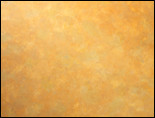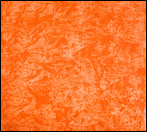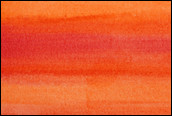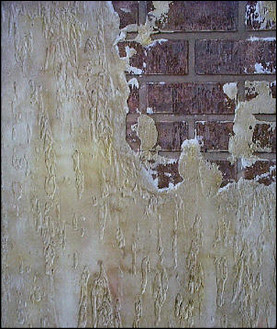This faux finish was designed to create the illusion of an old wall such as those found in Italy. © Artistic Brushworks |
Faux finishing is popular and it’s easy to see why. It allows self expression, personalization and customization, says Becky Ralich Spak, senior designer at Sherwin-Williams®. A faux finish can be a way to set the mood or tone of a room.
Today’s faux paint techniques and products appeal since they enable even beginners to produce interesting results. You’ll find step-by-step instructions on many do-it-yourself television shows and in a variety of magazines. The projects will inspire, educate and build confidence in any DIYer.
Techniques
Sandy Agar-Studelska, decorating products manager for Diamond Vogel® Paint, says faux paint finishes have been on the public’s mind for the last 15 years. Homeowners “really love the variety of finishes they can get,” she says.
Basically, faux paint finishes are created by using whatever might be at hand—crumpled rags, newspaper or sponges—or specially designed tools to produce specific results with paints and glazes. Just simple techniques can add more interest to a wall than just a plain coat of paint. More skillful applications can create realistic imitations—like marble, stone or bamboo—that’s difficult to tell from the real thing.
 |
||||
|
||||
Sponging and ragging are still among the most popular faux painting techniques. According to Quinn Larson, BEHR® Paints color trends specialist, they owe their popularity to being not only among the first do-it-yourself faux finishing techniques but easy as well.
Here is a brief look at some basic faux finish painting techniques:
 Sponging: This technique uses various textures and sizes of sponges to dab glaze or translucent paint onto a base coat in heavier or lighter amounts. |
 Ragging: Also called rag-rolling, ragging on or ragging off, this process involves using a bunched-up cloth to roll, blot or dab glaze off a base coat. Watch the How To Video on applying a Ragging faux painting technique. |
 Color washing: This method uses a towel or other cloth to apply a semitransparent glaze in a swirling motion as thinly or as thickly as desired over a base coat. Watch the How To Video on applying a Color Washing faux painting technique. |
| Combing: The teeth of a plastic or cardboard comb are pulled across wet paint to create wavy or cross-hatched patterns. Watch the How To Video on applying a Combing faux painting technique. |
| Stippling, spattering or speckling: Each is a bit different but basically the techniques involve applying random small dots of paint on top of a base coat. This can be accomplished by brushing across a mesh screen or flicking the paint off the brush with your fingers among others. Another brush is then used to flatten or pick up any over-application. |
Other faux painting techniques include Single-Process Strie, Double-Process Strie, Plastique, Leather and Stripes or Striping.
Changes on the Horizon
Faux finish painting is changing as consumers grow more sophisticated in their preferences. For some, it has been a matter of recognizing their do-it-yourself limitations. Some techniques require more skill than others and doing one project usually does not provide enough skill development. People also want to save time, according to Agar-Studelska. If budget is the main concern—and not the joy of accomplishing a project—determine if it’s more cost-effective to buy all of the special tools and textures needed or to hire someone.
Besides magazines and TV shows, look to decorators and paint manufacturers for ideas and services. Manufacturers have specialty finishes that add texture, dimension, light-reflecting abilities and depth to the paint that may need a more skillful hand.
Now that faux paint finishes have gained greater recognition and popularity as décor-supporting color and surface, says Larson, decorative finish designers have been busy developing looks that have greater variation and textural effect. The trend has shifted from a simple color combination to a faux look that replicates a tangible texture.
Faux finish painting can now replicate many textures and weaves, clouds and natural stone—both in texture and color. Consider faux finish looks that provide the depth, presence and visual interest to complement both room décor and color much like that of a decorative wall paper, Larson says. Bolder colors are gaining interest with both darker combinations in deep saturated colors as well as airy and clean combinations in light, clear colors.
Check out the creative products in the marketplace before starting. McCloskey® Special Effects, for example, includes metallic and aging patinas and rusts as well as dimensional finishes such as Sculpture Stone Bamboo Effect. Sherwin-Williams Illusions® has such products as Crackle Finish that creates a rustic, weathered look and Softsuede® and Sandscapes® finishes with a soft texture that provide dimension and visual interest.
When painting indoors, take precautions to ensure the indoor air quality of the home does not decline. There are many paints available on the market today that ease the homeowner’s concerns over volatile organic compounds, off-gassing and other indoor air pollutants.
For a better look at faux painting techniques, watch the How To Videos below:
Credit: Renovate Your World




























